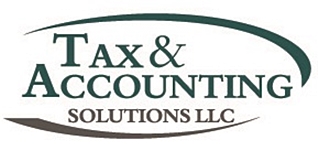Eventually all business owners will need to purchase or replace assets. When this happens, they need to determine how the cost of those assets will be recovered. Typically, the cost of business assets is recovered over their expected life through depreciation. If your goal is to recover that cost faster, you can either expense it under §179 or bonus depreciation.
Only certain property qualifies for the §179 deduction. That property includes tangible personal property, certain computer software and certain qualified real property, such as interior improvements, HVAC or alarm systems or roofs. The property must be acquired by purchase, meaning it cannot be a gift to you or property that you already own and convert to business use.
Under §179, businesses can deduct up to $1,040,000 of qualified equipment immediately, with a limit of $2,590,000, after which the deduction begins to phase out on a dollar-for-dollar basis. The deduction is limited to your taxable income from the business; however, any amount that can’t be deducted because of this limitation is carried over indefinitely to later years.
You can choose which purchases to cover under the §179 deduction and which to save as future tax breaks. You can even split the deduction for individual purchases (for example, claiming half the cost of a new car upfront while spreading out the rest of the purchase over time). One notable drawback to the §179 deduction is that if the business use drops to less than 50%, some or all of your previous deduction must be recaptured.
Bonus depreciation, on the other hand, has slightly different rules. First, there are no income limits or limits on how much you can spend on assets and write off. If you are a larger business planning to make large purchases of new or used assets, this option may look better for you.
Essentially, bonus depreciation allows you to deduct 100% of the cost of an asset in one year. Qualifying property for bonus depreciation must have a class life of 20 years or less and can include a wide variety of interior, non-load-bearing building improvements. Unlike §179, bonus depreciation does not apply to roofs, HVAC, fire protection systems, alarm systems and security systems.
One significant difference between bonus depreciation and §179 is that if you place several assets with the same class life, you must elect bonus depreciation for all or none of them. Electing §179 allows you to choose. The 100% bonus depreciation amount remains in effect from Sept. 27, 2017, until Jan. 1, 2023. After that, first-year bonus depreciation goes down 20 percent each year and is set to completely expire after 2026. There is no statutory end to §179.
While on the surface it may not look like there’s much difference between the two, the method you choose depends on several factors, such as your income, the type of property you purchase and when it’s placed in service.

